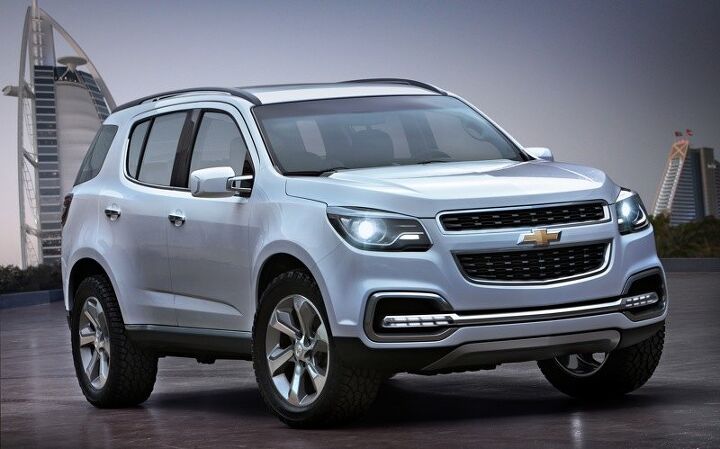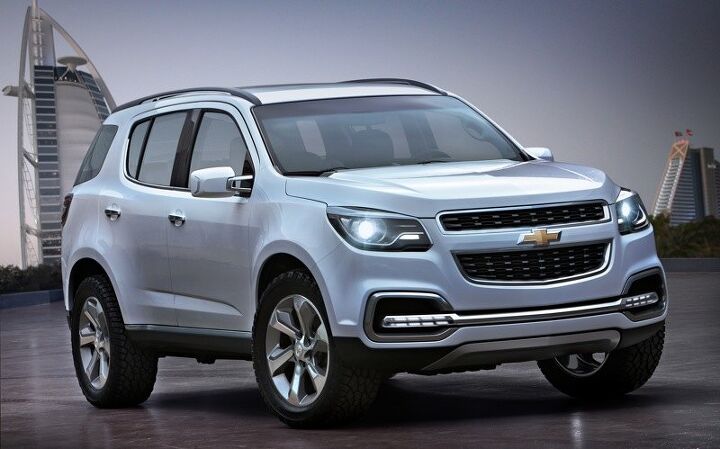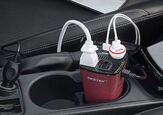What's Wrong With This Picture: No Country For Old-School SUVs Edition
Based on Chevy’s new Global Colorado, this Trailblazer is an old-school, body-on-frame, SUV… which won’t be sold in this, the erstwhile capital of body-on-frame SUVs. Even though the Colorado will be produced in the US, which would make the Trailblazer an easy addition to the US lineup, Chevy seems determined to keep it out of the US. Because, as GM’s midsized truck VLE (vehicle line engineer) Brad Merkel puts it
The growing markets of the world want flexibility. That means power and capability combined with comfort and efficiency. TrailBlazer does it all. You can tow anything, go anywhere, comfortably seat seven people, and do so with the fuel efficiency associated with a smaller, less capable vehicle. It’s the complete package
But Americans don’t want any of that. Americans want a nice, car-based Equinox or Traverse. And that’s just what they’ll continue to get…
More by Edward Niedermeyer
Latest Car Reviews
Read moreLatest Product Reviews
Read moreRecent Comments
- SCE to AUX How well does the rear camera work in the rain and snow?
- MaintenanceCosts The Truth About Isuzu Troopers!
- Jalop1991 MC's silence in this thread is absolutely deafening.
- MaintenanceCosts Spent some time last summer with a slightly older Expedition Max with about 100k miles on the clock, borrowed from a friend for a Colorado mountain trip.It worked pretty well on the trip we used it for. The EcoBoost in this fairly high state of tune has a freight train feeling and just keeps pulling even way up at 12k ft. There is unending space inside; at one point we had six adults, two children, and several people's worth of luggage inside, with room left over. It was comfortable to ride in and well-equipped.But it is huge. My wife refused to drive it because she couldn't get comfortable with the size. I used to be a professional bus driver and it reminded me quite a bit of driving a bus. It was longer than quite a few parking spots. Fortunately, the trip didn't involve anything more urban than Denver suburbs, so the size didn't cause any real problems, but it reminded me that I don't really want such a behemoth as a daily driver.
- Jalop1991 It seems to me this opens GM to start substituting parts and making changes without telling anyone, AND without breaking any agreements with Allison. Or does no one remember Ignitionswitchgate?At the core of the problem is a part in the vehicle's ignition switch that is 1.6 millimeters less "springy" than it should be. Because this part produces weaker tension, ignition keys in the cars may turn off the engine if shaken just the right way...2001: GM detects the defect during pre-production testing of the Saturn Ion.2003: A service technician closes an inquiry into a stalling Saturn Ion after changing the key ring and noticing the problem was fixed.2004: GM recognizes the defect again as the Chevrolet Cobalt replaces the Cavalier.fast forward through the denials, driver deaths, and government bailouts2012: GM identifies four crashes and four corresponding fatalities (all involving 2004 Saturn Ions) along with six other injuries from four other crashes attributable to the defect.Sept. 4, 2012: GM reports August 2012 sales were up 10 percent from the previous year, with Chevrolet passenger car sales up 25 percent.June 2013: A deposition by a Cobalt program engineer says the company made a "business decision not to fix this problem," raising questions of whether GM consciously decided to launch the Cobalt despite knowing of a defect.Dec. 9, 2013: Treasury Secretary Jacob Lew announces the government had sold the last of what was previously a 60 percent stake in GM, ending the bailout. The bailout had cost taxpayers $10 billion on a $49.5 billion investment.End of 2013: GM determines that the faulty ignition switch is to blame for at least 31 crashes and 13 deaths.It took over 10 years for GM to admit fault.And all because an engineer decided to trim a pin by tenths of a millimeter, without testing and without getting anyone else's approval.Fast forward to 2026, and the Allison name is no longer affiliated with the transmissions. You do the math.










































Comments
Join the conversation
not sure if my optics were off, does it look a Merc GLK?
They won't sell it in the US because the market segment it targets doesn't exist in the US. This is for markets where they sell rollover-happy pick-up based BOFs like the Hilux-based seven-seat Fortuner, the (old) Colorado-based Isuzu Alterra and the Montero Sport. Where you're not required to give your trucks electronic stability control or even ABS... or even rear disc brakes. We're getting it. You're not. Blame your sissified government regulations and drivers who can't stand a little death and dismemberment. Nyah nyah nyah.